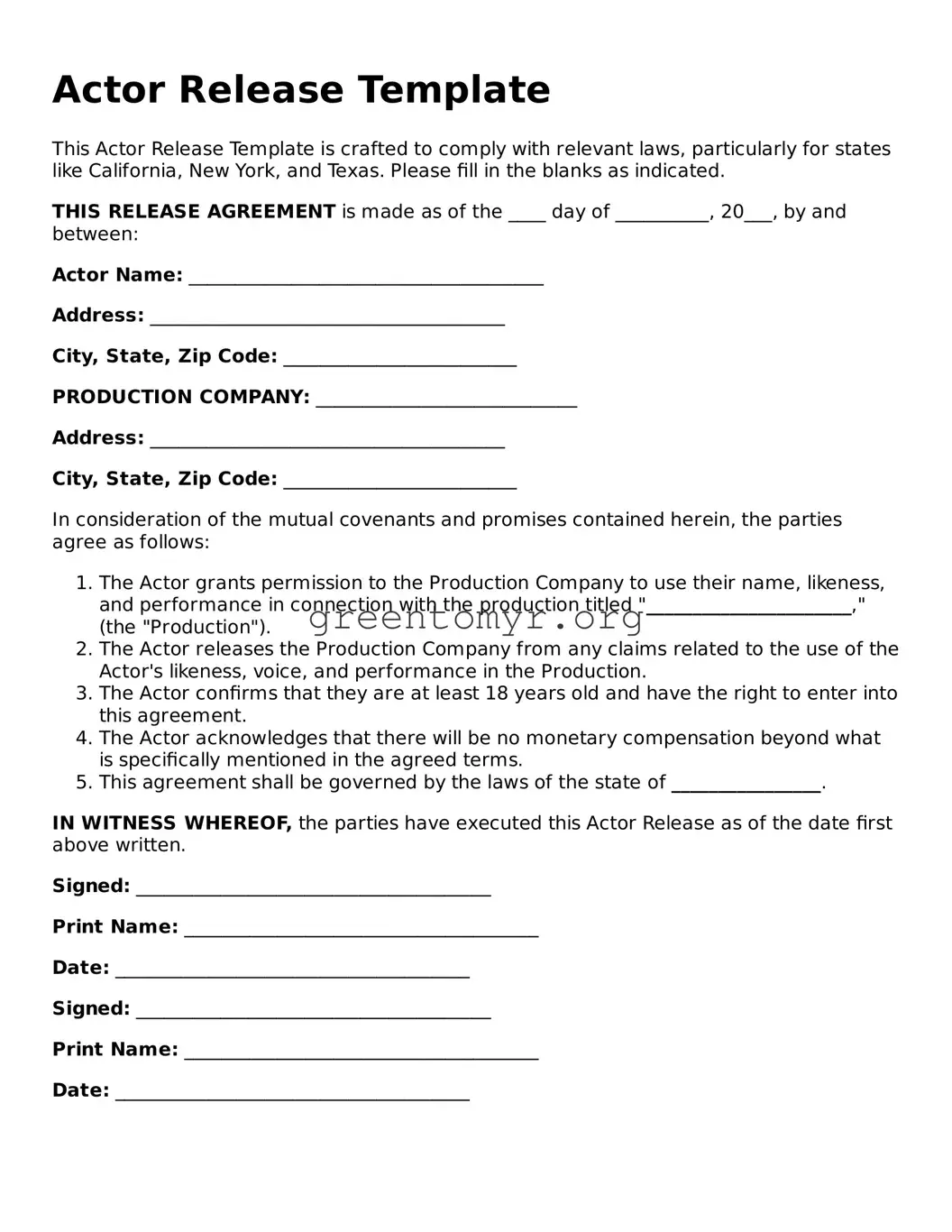Actor Release Template
This Actor Release Template is crafted to comply with relevant laws, particularly for states like California, New York, and Texas. Please fill in the blanks as indicated.
THIS RELEASE AGREEMENT is made as of the ____ day of __________, 20___, by and between:
Actor Name: ______________________________________
Address: ______________________________________
City, State, Zip Code: _________________________
PRODUCTION COMPANY: ____________________________
Address: ______________________________________
City, State, Zip Code: _________________________
In consideration of the mutual covenants and promises contained herein, the parties agree as follows:
- The Actor grants permission to the Production Company to use their name, likeness, and performance in connection with the production titled "______________________," (the "Production").
- The Actor releases the Production Company from any claims related to the use of the Actor's likeness, voice, and performance in the Production.
- The Actor confirms that they are at least 18 years old and have the right to enter into this agreement.
- The Actor acknowledges that there will be no monetary compensation beyond what is specifically mentioned in the agreed terms.
- This agreement shall be governed by the laws of the state of ________________.
IN WITNESS WHEREOF, the parties have executed this Actor Release as of the date first above written.
Signed: ______________________________________
Print Name: ______________________________________
Date: ______________________________________
Signed: ______________________________________
Print Name: ______________________________________
Date: ______________________________________
